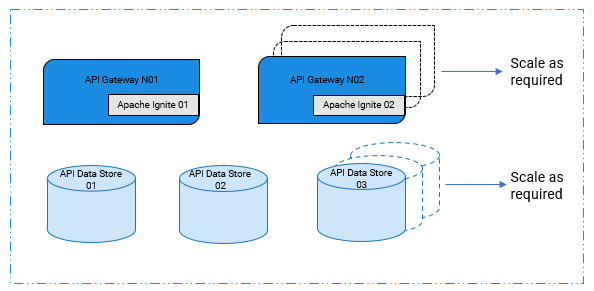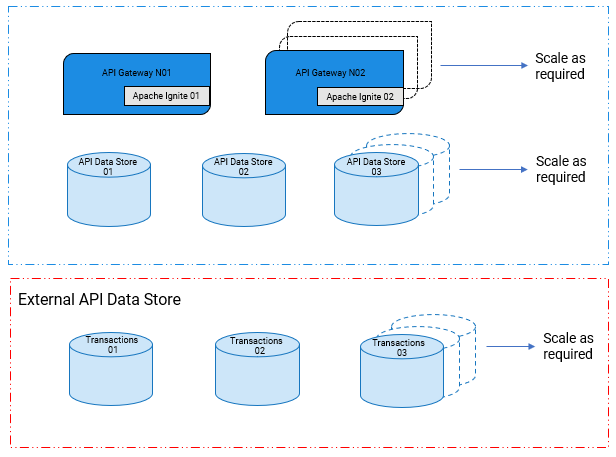To achieve high availability, you can cluster your
API Gateway, API Data Store and Apache Ignite instances within a data center or a region. Clustering ensures that there is no single point of failure in the system in that data center. As an alternative for Apache Ignite, Terracotta Server Array can be used to set up a cluster. For more information about the cluster deployment, see
Cluster Deployment. The typical HA architecture is as follows.
There is another variant to the HA architecture. You can store the Trasactional Events (TE) and logs in an External API Data Store too. For information about the external API Data Store, see
Connecting to an External Elasticsearch. The HA architecture with the External API Data Store is as follows.
While HA architecture offers protection against single point of failure within a single data center, it does not protect you from the failure of an entire data center due to events like a natural disaster, cyber attack and so on. For protection against data center failures and to ensure business continuity, you must choose one business continuity solution from the following:


